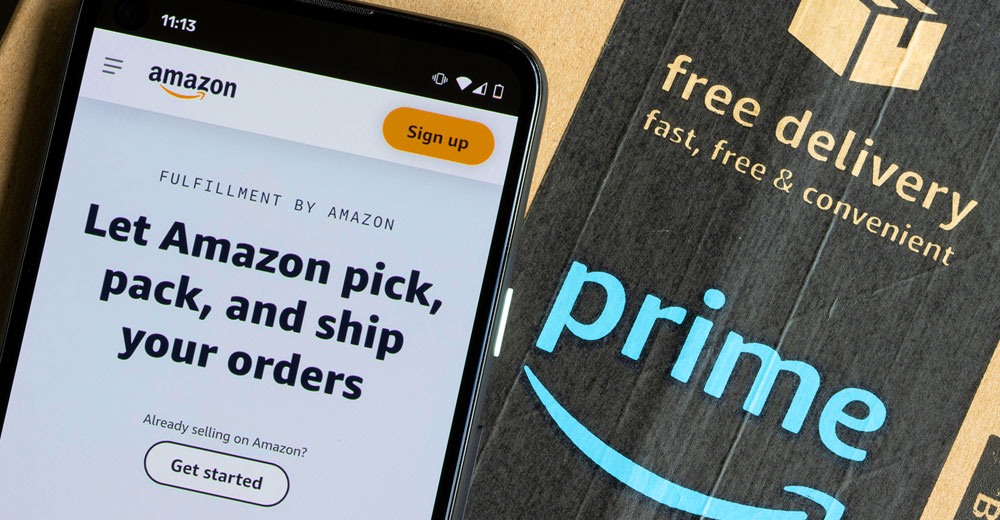Sellers on Amazon face a potentially lower bottom line this holiday season as they wait for partial refunds of wrongly calculated seller fees. Often, the wait drags on with little or no money returned.
That situation leaves retailers constantly at odds with Amazon’s automated accounting system. Frustrations set in as erroneous fees for customer returns, shipping costs, and inventory chip away at sellers’ profits.
With no centralized auditing system for vendors available within Amazon’s inner sanctum, sellers are left to their own resources to seek redress from Amazon’s questionable charges. Up to 70% of these claims against Amazon are left unresolved.
Chargeguard wants to change that inequity. The company’s Central Excise Revenue Audit or C.E.R.A. solution reveals the amount of chargeback and shortage fees that are potentially recoverable from Amazon.

Image Credit: Chargeguard
According to Chargeguard’s mission statement, Amazon’s vendors and marketplace sellers deserve fair treatment provided with transparency. That includes stronger oversight of erroneous fees.
Chargeguard also wants to ensure Amazon levies its vendor fees equally, regardless of size. That includes enforcing operational noncompliance on both sides of the table.
The pay-to-play marketplace forces vendors to absorb these fees as a cost of doing business, which is a complete abuse of power, according to Shelby Owens, director of business development at Charguard.
“These fees, for the most part, are erroneous. But vendors need Amazon,” she told the E-Commerce Times.
Fighting for Amazon Sellers
The fairness issue comes into question from Amazon’s use of its marketplace power. Vendors know that in today’s world, you must sell on Amazon to be successful, Owens observed.
That being the case, what do many sellers not do? They do not fight them. She added that sellers who do challenge are not the majority.
“So we come in as the expert who has learned Amazon’s process and do it for them,” said Owens.
What Triggers Amazon Seller Fees?
E-commerce vendors are a target because Amazon has built to scale. That means the company relies on automatons to account for its inventory, according to Owens.
For vendors, sometimes these automatons do not fully process the inventory. Sometimes the vendor does things to increase this fee-assessing process.
It can be anything that interferes with the receiving process. Amazon does not provide much in the way of latitude, Owens offered. Interfering factors might be putting a label on sideways or shipping in a too-big box. It could also be not shipping on time.
Regardless, that does not mean the product did not ship. Rather, vendors did not send them within Amazon’s guidelines. So they get duplicate charges.
“First, sellers get the erroneous shortage fee because Amazon says they did not ship the product. Second, they get a noncompliance fee, called a chargeback, where Amazon nickels-and-dimes vendors to death for not following their guidelines to a tee,” detailed Owens.
Growing Beyond Automation
Part of the cycle has a common entity — automation. Retailers are starting to rely on it more steadily to deal with supply chain and fulfillment.
According to Owens, Amazon has always been an outlier with its fees compared to other retailers. Now, more retailers are relying on automation to level the field.
That could exacerbate the issues even more. Owens anticipates these matters to increase across the board.
Retailers obviously benefit from selling on Amazon, the leading and largest marketplace, according to Hector Pantazopoulos, co-founder and CRO of influencer network SourceKnowledge.
“Selling on Amazon helps retailers gain access to a huge and international market of shoppers that know and trust Amazon, making them more likely to purchase there rather than from a website they do not know. In addition, Amazon handles all shipping logistics, making it easy for retailers to focus on what matters,” Pantazopoulos told the E-Commerce Times.
Navigating Drawbacks
However, being an Amazon seller does come with some pitfalls, Pantazopoulos offered. Amazon takes care of stocking, shipping, and fulfilling orders. The main downsides of the platform are chargeback and shortage fees associated with noncompliance with Amazon’s guidelines.
“Research shows that nearly all brands receive supply chain-related chargebacks from Amazon, and 90% report receiving shortage deductions that are believed to be incorrect,” he said.
Such fees have been jeopardizing the profits of small businesses selling on Amazon. As a result, he added that Amazon sellers turn to third-party companies to dispute their fees, which often end up getting reclaimed.
Vendors on Amazon lack a unified voice or representing agent to negotiate with marketplace officials. However, according to Owens, Amazon has a mediation process to resolve errors. Success in resolving fee disputes depends on the error.
“Amazon tries to give guidelines to follow and tips for how to follow them well, but they are not much help to vendors. For shortages, they talk about things you can improve to decrease shortages, but mitigation is not entirely possible because they rely on automation for receiving,” she explained.
Third-Party Assistance
Otherwise, attempts to resolve errors are individual. But there are different groups sellers can join to see how other vendors are managing and handling their Amazon business, she added.
Chargeguard enters the picture here as an alternative. It works directly with vendors to get them compliant, where possible, and recover reactively where correction was not possible due to the fee not being legitimate.
“Friction always exists when two people work together where one is at the mercy of the other. So, we come in as an unbiased third party representing the vendor to claw back their dollars,” said Owens.
That happens in a way that complies with the book that Amazon wrote, she noted, adding that her company has a great working relationship with Amazon and follows its processes.
“We also work to get vendors more compliant, which helps create less friction because Amazon wants its vendors to comply with their rules,” she said.
Monitoring Claims
According to Chargeguard, Amazon has a lackadaisical manner of resolving refund claims. The retail giant manages more than two billion SKUs, which makes discrepancies inevitable.
When reimbursements to sellers occur, the amount is only a fraction of what the marketplace owes first- and third-party sellers, says Chargeguard. So sellers must monitor their accounts, identify mistakes, and request reimbursements with no assurance of adequate resolution without its help.
To counter that reality, Chargeguard continuously monitors all pending refunds so sellers who register to use the company’s platform know what they are due. Chargeguard then works to recover reimbursements for them.


























































Social Media
See all Social Media